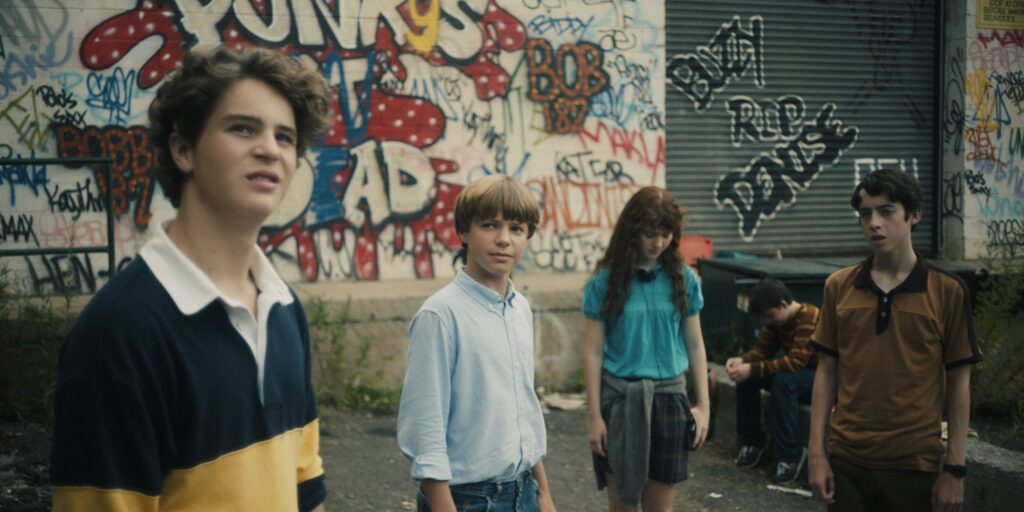18 to Party never quite finds its voice
Written by Ian Thomas Malone, Posted in Blog, Movie Reviews, Pop Culture
There are countless think-pieces written each day about the effects of social media on our broader mental health, particularly our country’s children. Boredom as we once understood the concept is essentially a thing of the past, with seemingly limitless entertainment options at any given time. Set in the early 80s, 18 to Party centers its narrative around the mundane interactions between eighth graders as they wait for something to happen.
The film is almost entirely shot behind a fairly mundane looking small-town nightclub, with the kids understanding that their youth places them relatively low on the social totem pole. Most of the kids are just happy to be somewhere, even if the whole setting looks pretty bleak and depressing. Director/screenwriter Jeff Roda presents a minimalist narrative, an obvious homage to the youth-centered films of the 80s, through the filter of a Waiting for Godot-style plot.
Roda’s screenplay is the film’s biggest liability. It’s neither funny nor endearing. The kids have fairly mundane conversations that might be relatable to some extent on a surface level. One of the more developed plotlines centers around one of the kids struggling to decide whether he wants to do theatre, the activity potentially existing in conflict with his soccer schedule.
18 to Party features a very young cast, unlike many films in the 80s which relied on actors in their 20s to play teenagers. For the most part, the kids are pretty good, trying their best to inject emotion into Roda’s fairly lifeless screenplay.
As a director, Roda really doesn’t do his actors any favors. The film makes frequent use of long takes, leading to many scenarios where the actors look pretty confused with what they’re supposed to be doing. Roda doesn’t actually give them anything to do. Often, they look bored, a sentiment the audience could certainly share.
The inconsistent approach to pacing produces inconsistent results. The meandering narrative might have worked with a better script, but the whole dynamic falls apart in the third act when Roda decides to throw in some heavy stuff. Recent suicides in the town are mentioned throughout the film, but Roda ramps things up for one particular scene that falls pretty flat without any consistent attempt at a build-up.
Roda has a particular affection for the word “faggot,” inserted liberally into one of the film’s more dramatic scenes, wielding it as a crutch. To an extent, one can understand a writer’s desire to achieve “authenticity” by using a slur that kids used then and still use now. At the same time, you have to wonder if anyone would have noticed if he’d simply omitted it altogether.
Whatever case could be made for throwing around a word like that is practically beside the point. Roda doesn’t use it well, instead just hurling it at the audience over and over again in a scene that completely misses its mark. Much like the rest of 18 to Party, it’s lazy.
18 to Party is a thoroughly lackluster endeavor. Roda’s awful screenplay deflates any value from this derivative half-baked homage. Even at eighty minutes, the whole ordeal feels too long. Roda clearly loves 80s culture, but he brings nothing new to the table here.











